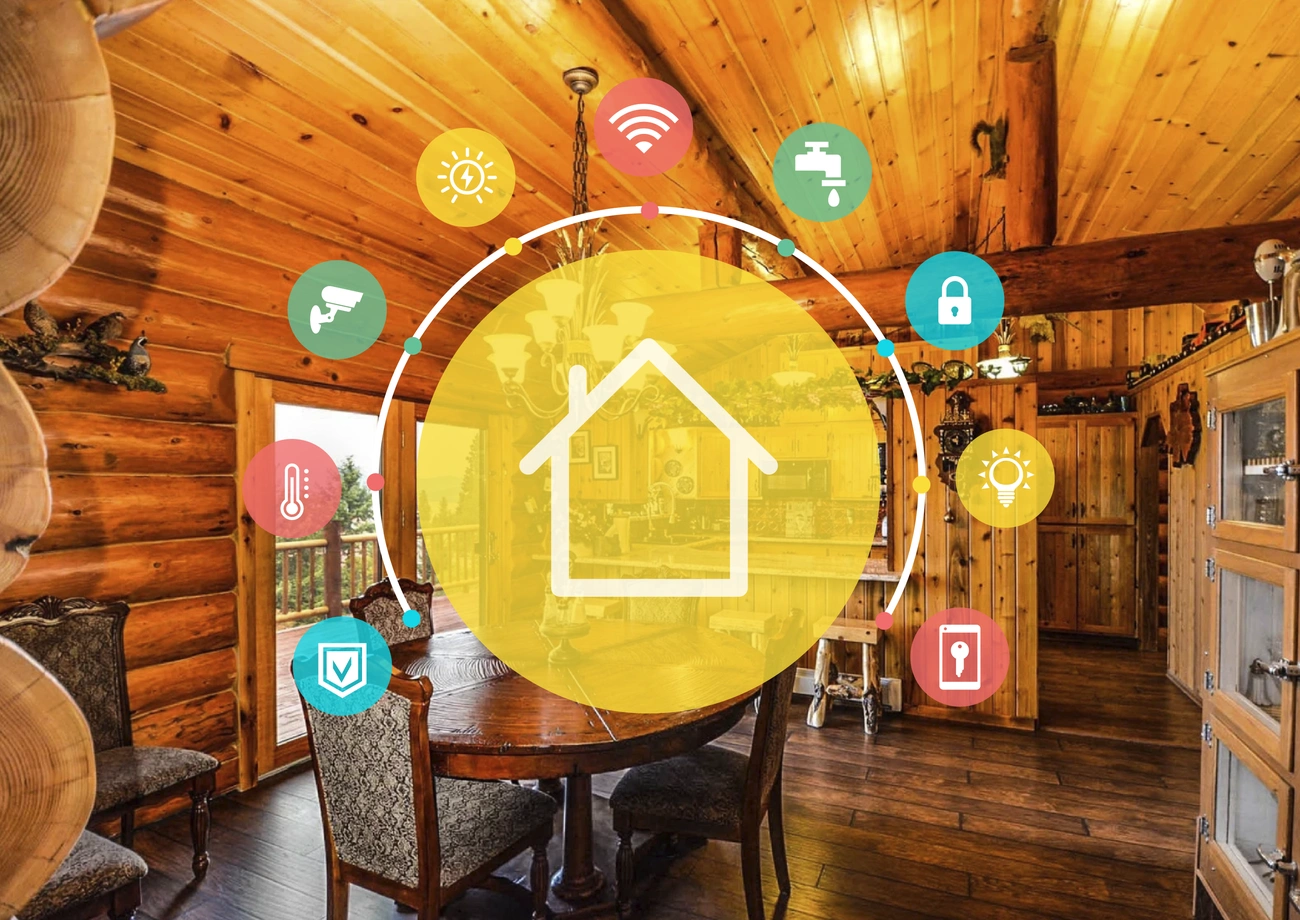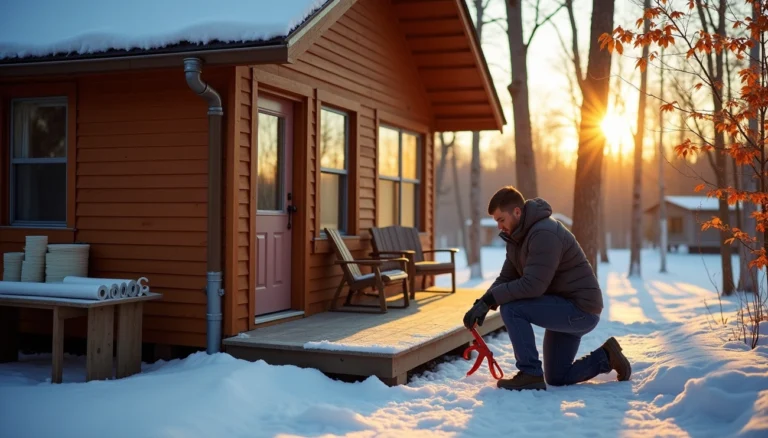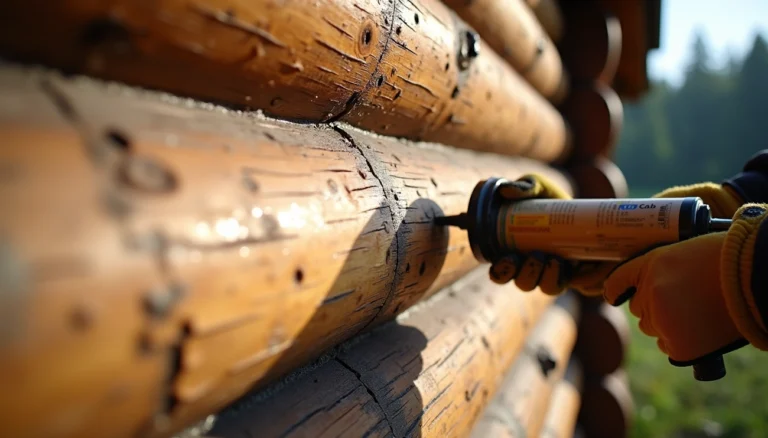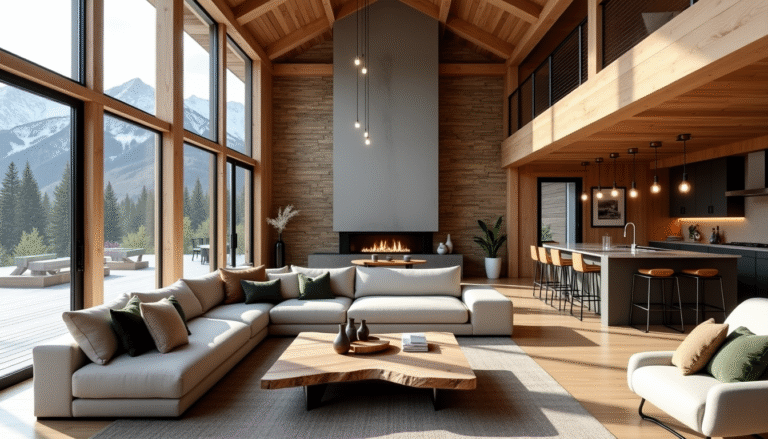Smart Cabin Automation: What Every Cabin Owner Needs to Know in 2025
Smart cabin automation revolutionizes our experience in getaway spaces. The cruise and cabin sector grows faster than other tourism industries. Now is the perfect time to think about how technology can improve these environments.
Smart cabins have evolved beyond simple conveniences in 2025. These spaces blend nature’s tranquility with automation’s convenience. The result is efficient, connected, and environmentally responsible living. Smart home cabinets offer better availability and energy management options. This technology forms the foundations of remote living. Smart energy management plays a vital role, especially when you have renewable energy sources.
These technologies create individual-specific environments that adapt to users’ activities and traits. They add much value to vacations and getaways. This piece explores everything you need to know about smart cabin automation in 2025. You’ll discover core technologies and practical applications that make cabin ownership more enjoyable and available.
Understanding Smart Cabin Automation

Smart cabin technology has evolved dramatically over the last several years. A smart cabin is a living space with advanced connected technologies that enable up-to-the-minute data exchange between various systems—including lighting, environmental controls, and entertainment systems. These smart environments use sensors, open software architectures, and wireless connectivity to create customized, responsive spaces that adapt to occupants’ needs.
What is a smart cabin?
Smart cabins combine IoT (Internet of Things) technology with sensors and machine learning to improve situational awareness and safety. The systems detect and report cabin status wirelessly, giving practical information to users instantly. These intelligent environments respond to user priorities and behaviors by combining centralized or distributed computing platforms with sensing technologies.
How cabin automation differs from traditional home automation
Traditional cabins need manual operation of lights, curtains, fans, and appliances. Smart cabin automation lets you control these elements from your smartphone or through voice commands. The main difference shows up in flexibility and integration—traditional home automation offers secure connections, while smart cabin systems work better for remote control and adaptability.
Smart cabin automation systems combine smoothly with other components to create a unified ecosystem. Traditional systems work independently without communicating with each other. Smart cabin technologies talk to each other and respond more effectively to environmental changes and user priorities.
Why 2025 is a turning point for smart cabins
The year 2025 marks a crucial milestone for smart cabin technology. The global smart cabin market will reach USD 25.00 billion in 2025 and grow at a 15% CAGR through 2033. This growth comes from connected technologies becoming common, sophisticated infotainment systems, advanced driver-assistance systems, and electric vehicles gaining popularity.
The EU’s Advanced Driver Distraction Warning regulations will take effect in 2025. These rules require manufacturers to add advanced in-cabin sensing technologies. Lower costs of core technologies and new regulations make 2025 the perfect time for smart cabins to become mainstream.
Core Technologies Behind Smart Cabin Systems
Modern cabin automation relies on several interconnected systems that work together harmoniously. These technologies will have matured by 2025 to create continuous connections and quick experiences for cabin owners who want both comfort and control.
IoT sensors and controllers
IoT sensors function as the nervous system of smart cabin automation and collect live data on environmental parameters like temperature, humidity, occupancy, and air quality. These devices send information to centralized systems that enable automated responses to changing conditions. Motion sensors detect presence for security purposes, and studies show properties with sensing cameras are 300% less likely to be burglarized. Environmental sensors can reduce energy consumption by 20-40% through intelligent HVAC management. Advanced setups use specialized sensors to monitor vital signs and detect subtle movements, such as a child’s breathing, which ensures detailed safety.
Microcontrollers and embedded systems
Microcontrollers—compact yet powerful devices that process inputs and trigger outputs to various cabin functions—sit at the heart of every smart cabin system. These embedded systems make split-second decisions that keep cabins smart, safe, and efficient. High-performance microcontrollers handle complex signal processing from various sensors, which is vital for both comfort and safety features. Many systems use Arduino-based controllers connected to relays that can activate multiple devices based on sensor inputs. These systems follow stringent safety standards and incorporate systematic processes and error detection mechanisms to prevent malfunctions.
Cloud integration and remote access
Cloud computing has transformed how cabin owners interact with their properties from afar. Cloud integration lets owners store, access, and analyze data remotely, so their cabin systems stay connected, whatever the distance. Technologies like Z-Wave enable wireless communication for home automation and allow remote control of appliances, energy systems, and security through smartphones or computers. Advanced platforms like Axinom On-Board Cloud centralize service management and data ingestion while enabling secure communication between various cabin services. This connectivity provides live alerts, reducing response time to potential issues by approximately 12.4%.
Smart home cabinet interfaces and dashboards
User-friendly dashboards serve as the visual gateway to smart cabin management. Effective dashboard design puts the most frequently used information on larger displays and maintains consistency across interfaces to minimize learning curves. Smart kitchen cabinets feature built-in technology that includes touchless operation, integrated lighting, and inventory monitoring sensors. Many systems work with voice assistants like Amazon Alexa or Google Assistant, so users can control cabinet features through simple voice commands. The best dashboards show detailed overviews of important data while remaining editable to accommodate inevitable changes in goals, equipment, or user priorities.
Designing a Smart Cabin: Architecture and Components
Smart cabin design needs careful planning to integrate different components effectively. SmartLink leads the way in cabin management with its decentralized architecture that cuts down wiring and boosts reliability.
System architecture overview
The best cabin systems today use a decentralized architecture that brings together lighting, environmental controls, and entertainment on one platform. Modern smart cabins run on Software-Defined Vehicle (SDV) architecture that separates software from hardware through standard interfaces. This setup gives you smooth control and creates an immersive experience. These systems work great for remote cabins because they weigh less, run reliably, and can diagnose problems internally.
Key hardware components: Arduino, relays, sensors
The core hardware setup has:
- Arduino microcontrollers: The Arduino UNO WiFi works as a gateway for a simple IoT setup and connects to relay modules that control electrical appliances
- Relay modules: These electronic switches keep control circuits separate from connected devices
- Sensors: The sensory network consists of temperature, humidity, motion (PIR), and air quality monitors
Software tools: Arduino IDE, mobile apps
The Arduino Integrated Development Environment (IDE) serves as the main programming platform and uses C++ to control connected components. Mobile apps like Honeywell Cabin Control let you manage environmental systems and entertainment through Wi-Fi. These apps can show different interfaces based on user roles or cabin areas.
Connectivity: Wi-Fi, Bluetooth, GSM modules
Bluetooth provides reliable wireless communication for automation components and sets up quickly. It hops frequencies up to 1,600 times per second across 79 transmission channels, which makes it very resistant to interference. Wi-Fi access points extend the range throughout the cabin, and modern systems can handle about 100 streaming clients at once.
Use Cases and Real-World Applications
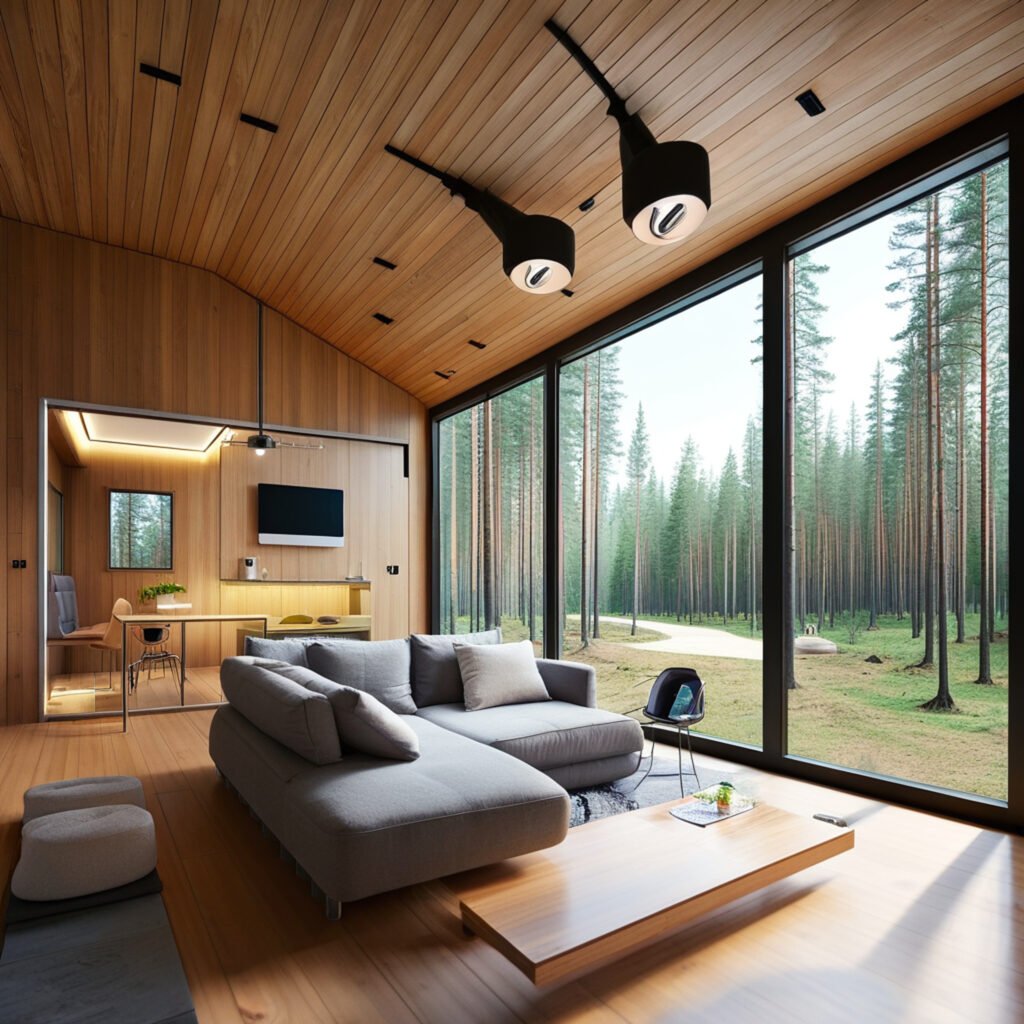
Smart cabin technology applications create remarkable lifestyle improvements for owners. Let’s take a closer look at these systems and their real-life applications.
Automated lighting and temperature control
Smart lighting systems respond to environmental conditions and user priorities intelligently. Circadian lighting adjusts brightness and color based on time of day automatically. It provides morning hues to help you wake up and warmer evening tones to improve sleep. Motion sensors enable hands-free illumination during midnight trips to the restroom or kitchen. Smart thermostats maintain optimal temperature while reducing energy consumption in cabin settings. These adjustments based on occupancy can save 30% on energy costs.
Motion-based security and alerts
Motion sensors provide vital security for remote properties through early alert systems. Guardline Security systems use MURS radio frequency and IR technology in multiple zones. They send signals to a Basecamp monitor when motion occurs. These alerts give owners time to react to potential risks or prepare for visitors. Properties equipped with sensing cameras are 300% less likely to experience break-ins, making them substantially safer.
Voice-controlled smart home cabinets
Cabinet systems blend with voice assistants like Amazon Alexa or Google Assistant for hands-free operation. Users with mobility challenges find voice-activated controls to be “game changers”. Smart kitchen cabinets come with touchless mechanisms, integrated lighting, and inventory monitoring features that respond to simple voice commands.
Energy-saving modes and remote monitoring
CabinPulse enables owners to track temperature, humidity, carbon monoxide levels, and power outages without existing WiFi. The system sends customized alerts for specific conditions. It notifies when temperatures drop below 10°C for over an hour, which prevents frozen pipes and damage. Data storage helps identify patterns that lead to proactive solutions.
Accessibility features for mobility-challenged users
State-of-the-art accessibility features have changed cabin experiences for mobility-challenged users. Automated doors and lighting systems detect proximity, which eliminates manual switch operation. Smart kitchen cabinets use servo motors to open automatically when needed. They include timers that keep cabinets open as required. These features create spaces that celebrate diversity and encourage independence.
Conclusion
Smart cabin technology has grown from basic convenience features into a key part of modern cabin ownership. IoT sensors, microcontrollers, and cloud connectivity work together to create living spaces that adapt to our needs while protecting the natural environment we seek in these retreats. On top of that, today’s systems’ decentralized architecture gives remote properties the reliability and flexibility they need.
Market growth forecasts through 2025 and beyond back up what cabin owners already know—this technology solves real problems instead of just adding fancy features. Smart cabin systems handle practical issues like preventing frozen pipes in winter and maintaining security all year while making the experience better.
The best thing about this tech change is how it opens up cabin ownership to more people. These spaces become accessible to people with mobility challenges. At the same time, energy management systems cut both environmental impact and running costs, which makes owning a cabin more sustainable.
Looking ahead, smart cabin automation will keep getting better. The year 2025 marks a turning point when rules, tech maturity, and user adoption come together. People who accept these new ideas now will stay ahead, enjoying cabins that blend nature’s peace with smart automation’s convenience.
The smart cabin revolution lets us focus on what really counts—spending time with nature and loved ones without property management worries. So when you think about upgrades or new purchases, note that smart cabin technology goes beyond convenience—it creates spaces that improve our lives while keeping the simplicity we want in our cabin retreats.
Show facts

